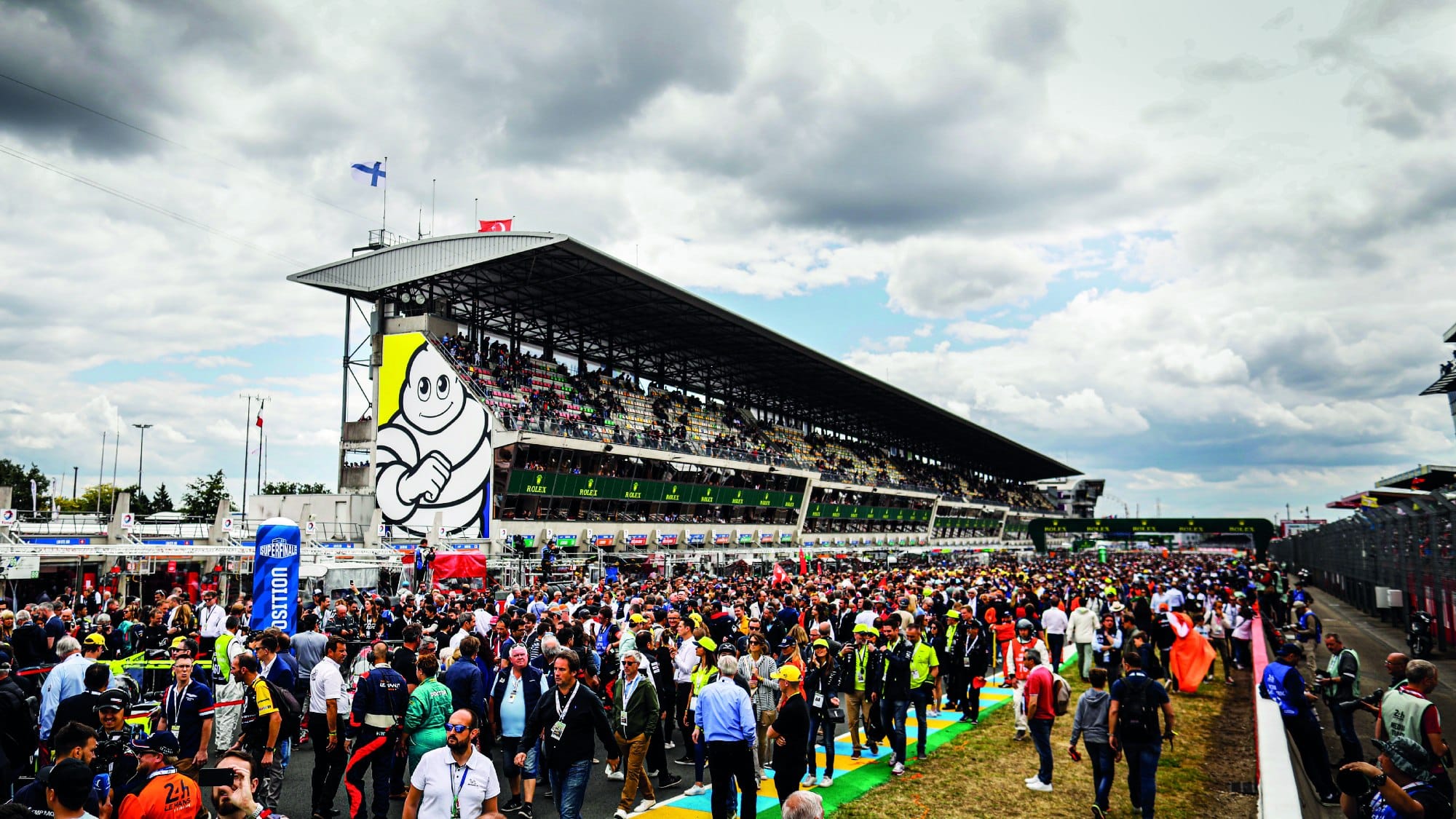La Renaissance of Le Mans' new Hypercar era
This year’s Le Mans 24 Hours heralds the era of the Hypercar class, a spectacle that will be witnessed by 50,000 fans – if they can prove they are Covid-free. Gary Watkins guides us through the new rules and the teams, and reveals why endurance racing is about to become so compelling
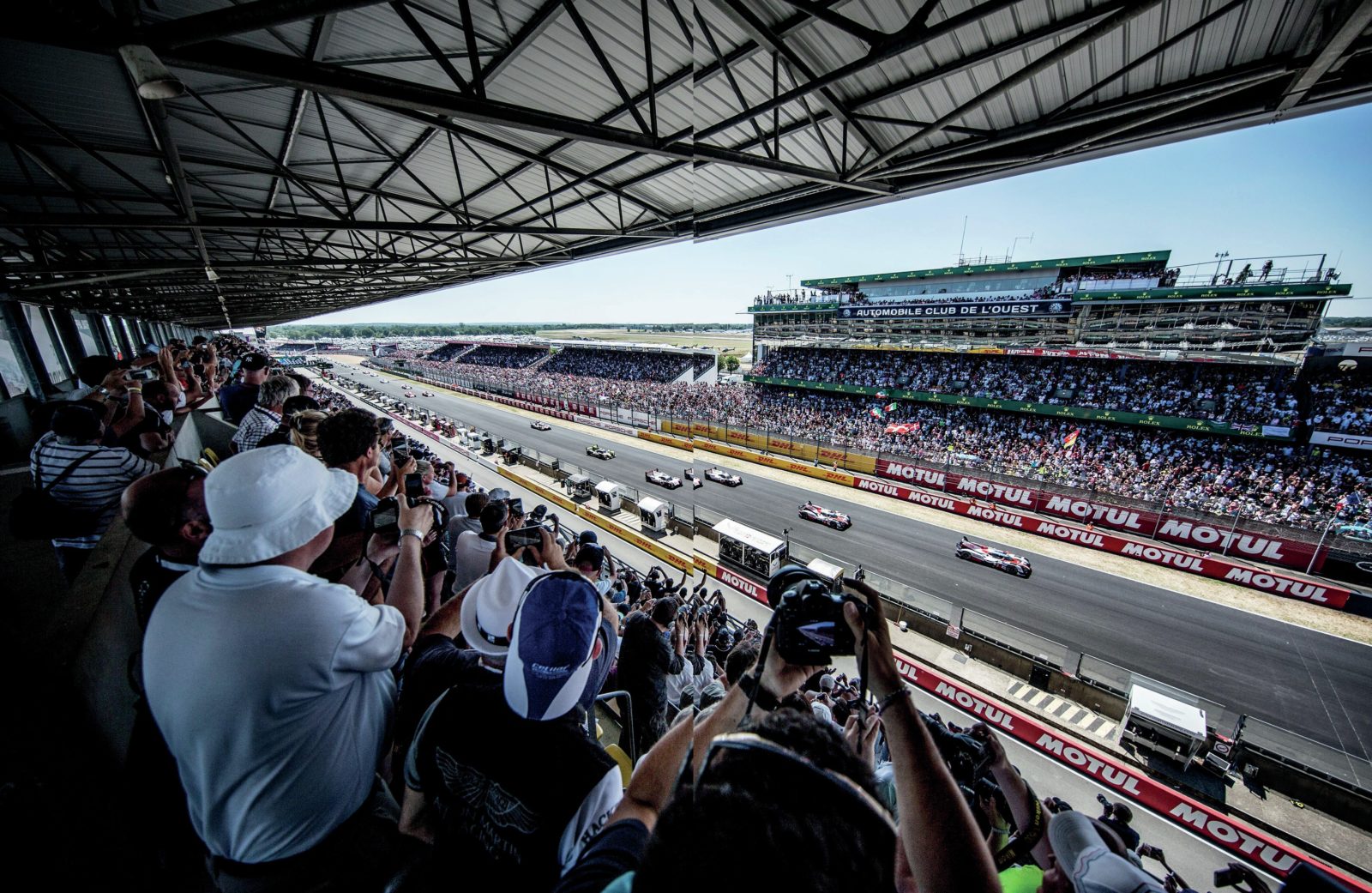
Getty Images
Le Mans’ new era: I predict a classic
On the face of it, we shouldn’t be getting excited by the Le Mans 24 Hours. After all, we’ve only got five cars to duke it out in the top class. But that’s to miss the point. This season is ground zero for a mouth-watering new era of sports car racing that many are predicting will be a classic.
There’s every reason to believe it will be. Look who are coming to the World Endurance Championship in the near or slightly distant future. Peugeot arrives next year, to be followed by a cascade of names. Ferrari makes its long-awaited return to the pinnacle of endurance racing as a factory in 2023, while Audi and Porsche will join the party at the same time. BMW and Honda’s Acura brand are committed to building cars for this new age, though we can’t be certain if and when we will see them in the WEC and at its centrepiece round at Le Mans.
The marques that we know will be on the grid in its centenary year of 2023 have 47 outright victories in the French enduro between them or have won more than half the 88 editions held.
That’s the good news; the bad news is that the makers will be racing at Le Mans and WEC under two sets of rules. The Le Mans Hypercars developed by Toyota, Peugeot, Ferrari and the boutique marque Glickenhaus will be up against the LMDh machinery developed out of an off-the-shelf LMP2 design by Porsche and Audi. They will come together in the confusingly named Hypercar class.

Le Mans Hyperjourno Gary Watkins in familiar territory
It would be pointless to say that it would be better if there was just one rulebook. Of course it would, but the way the regulations evolved after it became clear that LMP1 was out on its feet midway through 2017 didn’t allow for that.
The Balance of Performance became a component part of the new era early in that process and its role in balancing different types of machinery was reinforced when LMDh was announced in 2020 to at least partially unite the WEC with the IMSA SportsCar Championship in North America. Many like to preface the term BoP with the words ‘the dreaded’. The reality is that it is a necessary evil.
Balancing cars from two divergent rulesets is going to have its pitfalls, more so because within the Hypercar class there will be four-wheel-drive LMH hybrids, non-hybrid LMHs and LMDh machinery with rear-axle energy hybrid systems. Dodging them is the challenge for men in blazers over the years to come.
The hope is that the clever way the rules have been written and the experience of the automatic BoP devoid of human subjectivities employed since 2016 in the GTE Pro class can work its magic. When people are no longer talking about BoP, it will have done its job. Then we’ll know a golden age is upon us.
Toyota bids for four in a row
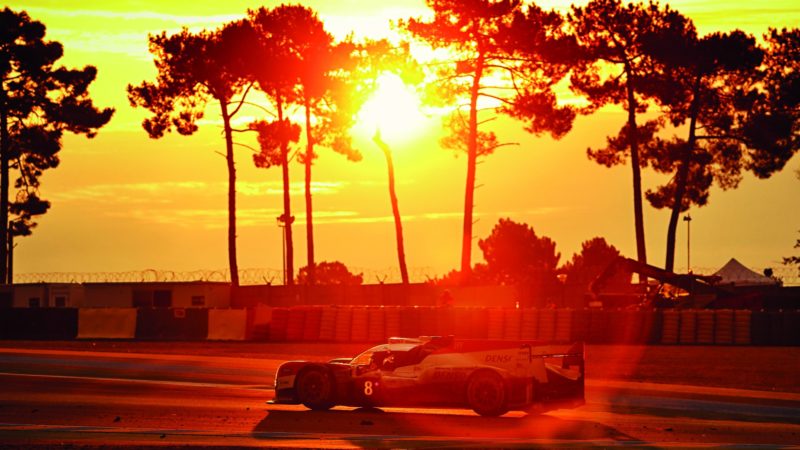
Gazoo dawn: the Toyota TS050 Hybrid of Sébastien Buemi, Kazuki Nakajima and Brendon Hartley en route to victory on Sunday morning in 2020
Getty Images
It seems like only a few short years ago that the Toyota curse would prevent it from ever winning the Le Mans 24 Hours. Think back to the last-gasp failure in 2016 or the bizarre sequence of events that led to Kamui Kobayashi rooting his clutch 12 months later. Now, it is bidding for a fourth straight victory in the French enduro.
Only the Bentley works, the Ferrari factory team and Joest Racing with Audi have managed four or more wins on the bounce. Toyota Gazoo Racing has every chance of emulating them at this year’s rescheduled Le Mans on August 20/21.
It has been King of the Castle in the World Endurance Championship and at Le Mans since it was left as the last manufacturer standing in LMP1 at the end of the 2017 season. That remains the case at the start of a new era as it finds itself up against a niche manufacturer — and newcomer — in Glickenhaus and a lowkey semi-works effort from Alpine.
Two wins from two starts in the opening rounds of the WEC at Spa and then the Algarve circuit in May and June respectively suggest that Toyota has an effective and reliable racing car in the new GR010 Hybrid. The odds are firmly in favour of Toyota continuing its winning streak at Le Mans. The question is not so much whether Toyota can win as if reigning WEC champions Kobayashi, Mike Conway and José Maria López can bury their bad luck and prevail over team-mates Sébastien Buemi, Brendon Hartley and Kazuki Nakajima.
The return of a legend
Renault’s Alpine brand has a special place in the history of Le Mans. It was a fixture on the grid with a line of small-capacity GT cars in the 1960s before returning with overall victory in its sights in the mid-1970s with a Group 6 prototype that ultimately prevailed in 1978. Now the sports car marque is back chasing outright honours after an absence of more than 40 years.
Alpine’s assault on the Hypercar class together with the Signature team follows eight years in LMP2, a period that yielded four class victories at Le Mans, a pair of WEC titles and two in the sister European Le Mans Series with ORECA chassis. They have stepped up with another ORECA design, the Gibson-powered machine that formerly raced as the Rebellion R-13, taking advantage of rules that allow LMP1 machinery to race on for a season.
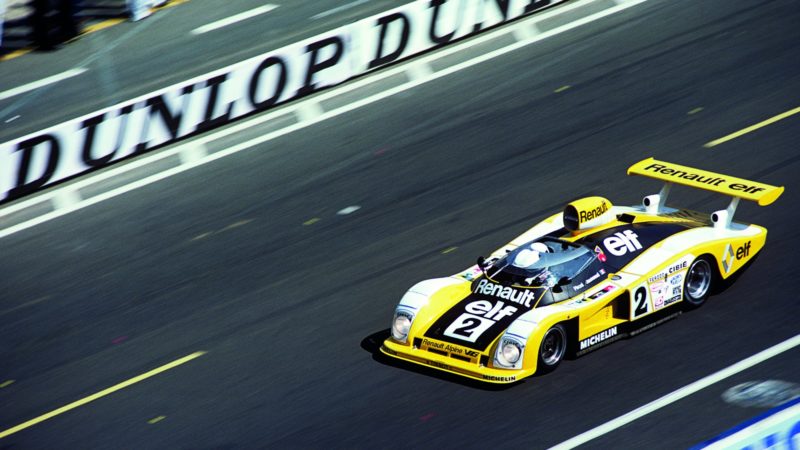
Alpine gave an all-French triumph at Le Mans in 1978
Getty Images
The Alpine-Gibson A480, as the car is now known, could well have won the opening two rounds of the WEC in the hands of Nicolas Lapierre, Matthieu Vaxiviére and André Negrão but for a quirk of the rules.
P1 cars have been slowed to equate their performance with that of the new Le Mans Hypercars. The Balance of Performance rules are also meant to ensure that they can go the same number of racing laps between refuelling stops, but the Alpine has been unable to achieve its target because the R-13 was hastily developed out of ORECA’s LMP2 chassis at the end of 2017 and has restricted fuel capacity. Extra fuel stops have blunted the A480’s challenge so far and are likely to do so again at Le Mans.
What we don’t know yet is whether this is a one-shot opportunity for Alpine to repeat its ’78 triumph with Didier Pironi and Jean- Pierre Jaussaud aboard an A442B. The A480 isn’t due to be eligible next year, but Signature boss Philippe Sinault has made his aspirations to continue with an all-new Alpine, most likely an LMDh, in the future.
Can an LMP2 win?
The answer to this one comes in two parts. On simple pace, one of the LMP2 hordes can’t win. On reliability, it has to be possible for someone from the secondary prototype class to sneak through to take the overall win.
Toyota has been outspoken about just how close the P2 pack is to the new LMHs. It argues that measures designed to slow the secondary prototypes to maintain a separation between the top two classes haven’t gone far enough. But when the WEC arrives in Le Mans, the LMH machines will be able to stretch their legs on the Mulsanne Straight and elsewhere, and the gap will grow.
The events of Le Mans 2017 show that a P2 can potentially win if the cars in the top class hit trouble. It nearly happened four years ago and that was at a time when there were three manufacturers battling it out in LMP1. United Autosports, Jota, G-Drive Racing and class newcomer WRT –a winner of the Spa and Nürburgring 24 Hours with Audi GT machinery – are probably the teams most likely to spring a surprise.
All-female teams
Two all-female driver crews again form part of the 62-car Le Mans entry. The Signatechrun Richard Mille Racing LMP2 squad, inset below, is back, this time as part of a full WEC campaign, while the Italian Iron Lynx squad fields the ‘Iron Dames’ in a GTE Am Ferrari for a second year. It is the first time that there have been two such line-ups in the race in consecutive seasons since before World War II. These programmes, backed by the FIA’s Women in Motorsport initiative, are aiming to redress that lack of female participation in endurance racing by showing that it is a viable career route.
Chevrolet returns
Chevrolet will be back on the grid after a Covid-enforced hiatus last year brought its run of Le Mans starts stretching back to 2000 to an end. The new mid-engined Corvette C8.R GTE Pro contender that was supposed to grace the Circuit de la Sarthe for the first time last year will make its belated debut in the big race this time around. The car wasn’t competitive on a one-off outing in the WEC at Spa in May, but that appearance was all about allowing the rule makers to take a close look at the car and gather in the data for the all-important Balance of Performance.
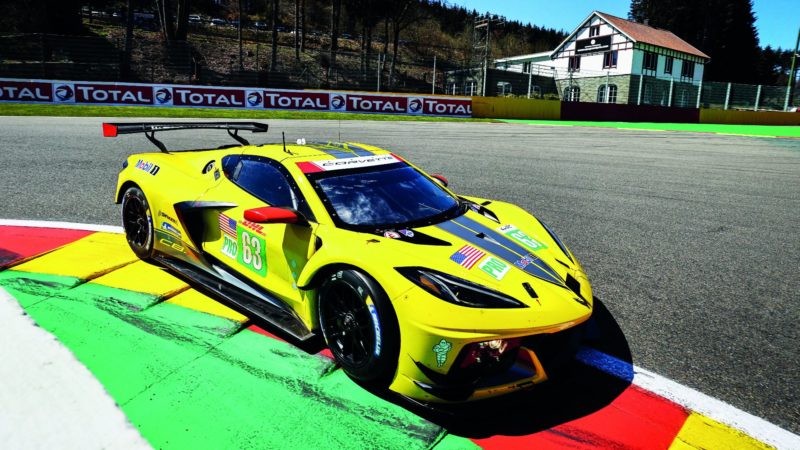
The two Corvette C8.Rs of Corvette Racing will make up a quarter of the LMGTE Pro field at Le Mans
Getty Images
There are two new faces in the Corvette Racing line-up this year, and they’re both Brits. Nick Tandy, overall winner with Porsche in 2015, has joined the team’s full-season line-up, while Mahindra Formula E racer Alexander Sims has come in for the long races, Le Mans included, alongside American Tommy Milner. Corvette Racing lines up in a class that is now a rump of its former self. Aston Martin followed Ford and BMW out of GTE Pro over the winter, leaving just Porsche and Ferrari as full-season combatants in the WEC.
The factories are joined, however, by two privateers running the second generation of Porsche’s mid-engined 911 RSR. WeatherTech Racing takes time out from its IMSA SportsCar Championship campaign in conjunction with Proton Competition to race at Le Mans, while the Taiwanese HubAuto Corsa squad makes its second appearance. Its roster includes GP winner and Super GT regular Heikki Kovalainen.
The fans are back!
An ingredient essential to the magic of Le Mans was missing in 2020 – the fans. The good news is that spectators are back for 2021, though not the heaving mass of a quarter a million or more who attend the race in a normal year.
The plan is to allow 50,000 spectators, all of whom will have to present the French government’s new pass sanitaire to gain access to the circuit. That means that they will have had to have been fully vaccinated, received a negative PCR test in the previous 72 hours or have caught Covid in the previous six months.
The fans will be free to roam the spectator areas from Maison Blanche up to Tertre Rouge. But whether the Mulsanne Corner and Indianapolis/Arnage viewing areas will be open is yet to be confirmed.
And so to Test Day…
The traditional Test Day was another victim of Covid in 2020. It’s back this year, though rather than taking place two weeks before the main event, it will go ahead on the Sunday prior to race week. Practice and qualifying begin on Wednesday with the new-for-2020 Hyperpole qualifying session for the fastest six cars in each class on Thursday.

